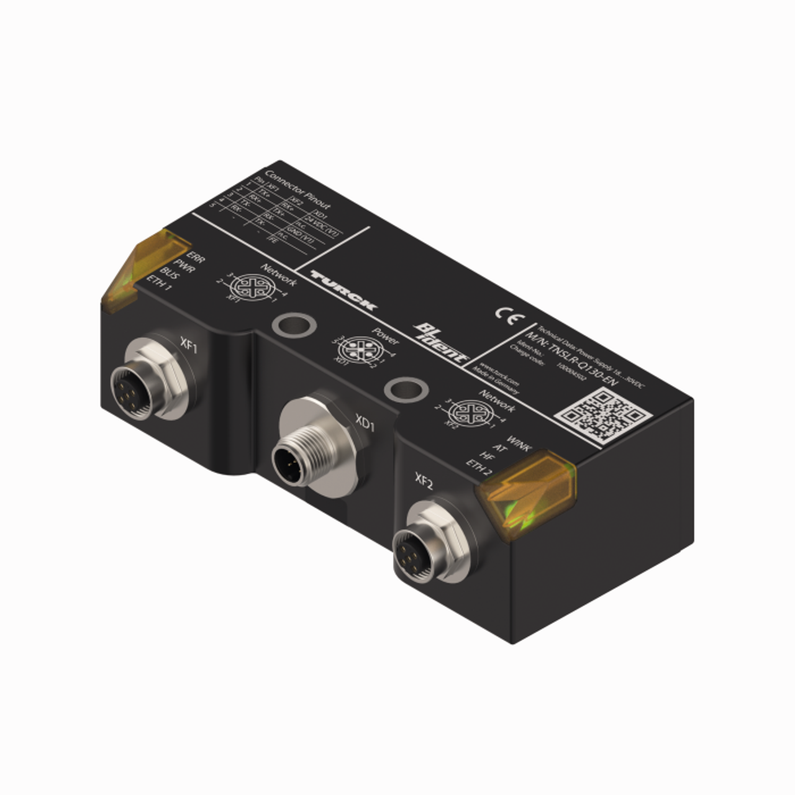Synergizing Sensor Technologies
As we venture into an era dominated by digitalization and the Internet of Things (IoT), the role of smart sensors in manufacturing is escalating exponentially. The ability of these sensors to communicate with the Internet, cloud, and edge devices is transforming the industry, and this transformative shift includes not only sophisticated devices but also extends to "dumb" or analog ones. In this article, we explore the convergence of smart sensor technologies and feedback applications, delving into their applications in both robotics and automated processes.
Robotics
In the realm of robotics, smart sensors, especially position sensors, are indispensable for providing real-time information about the location, orientation, and movement of robotic components. The following applications showcase the integration of position sensors in robotics:
Joint Position Sensing: Utilizing rotary or linear encoders, potentiometers, and resolvers, position sensors attached to robot joints provide crucial feedback on angles and positions. This data is fundamental for precise control of the robot's movements.
End-Effector Positioning: Employing force/torque sensors, six-degrees-of-freedom (6DOF) sensors, and vision systems, position sensors on the robot's end effector determine its position and orientation in three-dimensional space. This is critical for tasks like pick-and-place operations and assembly.
Absolute and Relative Positioning: Absolute and relative encoders play a vital role in providing precise position information and measuring changes in position, respectively. These sensors are integral for navigating within a workspace and controlling specific joint movements.
Closed-Loop Control Systems: Position sensors form the backbone of closed-loop control systems, providing continuous feedback to adjust and control the robot's movements for enhanced accuracy and stability.
Collision Detection: Force or torque sensors on robot arms detect unexpected contact with objects, crucial for implementing safety measures and enabling collaborative robot (cobot) applications.
Navigation: Wheel encoders and inertial measurement units (IMUs) are essential for estimating a robot's position and orientation during navigation, crucial for tasks in mobile robots and autonomous vehicles.
Sensor Feedback Signals for Control Algorithms: Various types of encoders and sensors provide feedback to control algorithms, enabling adaptive movements based on external stimuli or changes in the environment.
Orientation Control and Dynamic Balancing: Inertial measurement units contribute to achieving orientation control and dynamic balancing, ensuring stability during activities like walking or traversing uneven terrain.
Automated Processes
Beyond robotics, smart sensors find widespread application in automated processes, contributing to efficiency, precision, and safety. Here are some key areas where position sensors play a critical role:
Linear Actuators and Motors: Linear encoders and LVDTs monitor the position of moving components in linear actuators and motors, providing crucial feedback for controlling the linear movement of tools, conveyors, or other automated systems.
Rotary Motion Control: Rotary encoders, potentiometers, and resolvers monitor the angle or rotation of components like shafts, wheels, or robotic joints, ensuring precise control of rotary motion in automated machinery.
Conveyor Systems: Photoelectric sensors or ultrasonic sensors play a pivotal role in controlling conveyor systems by detecting the presence, location, or movement of objects on the conveyor belt, facilitating material flow and synchronization.
Pneumatic and Hydraulic Actuators: LVDTs and magnetostrictive sensors monitor the extension or retraction of cylinders in pneumatic and hydraulic actuators, providing feedback for precise control in applications such as material handling, pressing, or clamping.
Material-Handling Systems: Photoelectric sensors, ultrasonic sensors, and advanced vision systems are frequently used in material-handling systems to detect the presence, position, or dimensions of objects. This information guides the movement of materials, robotic arms, and facilitates automated picking and placing.
Machine Shop and Mechanical Fabrication Workshop: Laser sensors and advanced vision systems serve as crucial tools for positioning sensors in machining or assembly processes. This ensures precise alignment, placement, and quality control in tool and workpiece positioning.
Automated Guided Vehicles (AGVs): Magnetic sensors, vision systems, or laser sensors are essential for controlling AGVs, enabling them to navigate predetermined paths and ensuring accurate and safe movement within a facility.
Safety Systems: Integrating position sensors into safety systems, such as safety light curtains, safety mats, proximity sensors, or visual detection devices, contributes to detecting the presence or movement of personnel within hazardous areas. This facilitates the implementation of safety measures to protect operators and prevent accidents.
The amalgamation of smart sensor technologies and feedback applications is reshaping the manufacturing landscape. From robotics to automated processes, the seamless integration of sensor data ensures precision, efficiency, and safety. As we continue to advance in the era of Industry 4.0, the synergy between smart sensors and feedback applications will undoubtedly play a pivotal role in driving innovation, enhancing productivity, and maintaining a competitive edge in the manufacturing sector.
Are you ready to revolutionize your manufacturing processes and embrace the future of Industry 4.0? The integration of smart sensor technologies and feedback applications is the key to unlocking unparalleled precision, efficiency, and safety in your operations. Contact us at 1-888-600-3080 or click here to book a 15 minute appointment to speak with one of our sales engineers now.
Recent Posts
-
Best Methods for Connecting Older Devices and Machines for Data Analysis
In today's rapidly advancing technological landscape, data analysis has become a cornerstone for inf …May 6th 2024 -
Introducing the Turck Q130 HF Read/Write Head: Revolutionizing RFID Data Management
In today's fast-paced industrial landscape, efficiency and accuracy are paramount. The ability to se …Apr 30th 2024 -
Using Scan Tunnels to Track, Sort and Route Warehouse Packages
If you’re using conveyor lines to move products, packages and shipments through your warehouse, the …Apr 17th 2024




